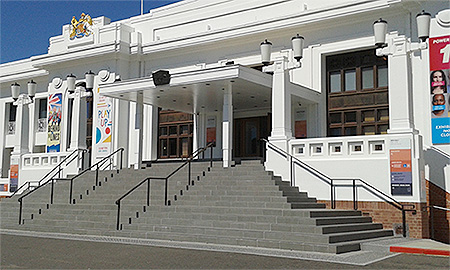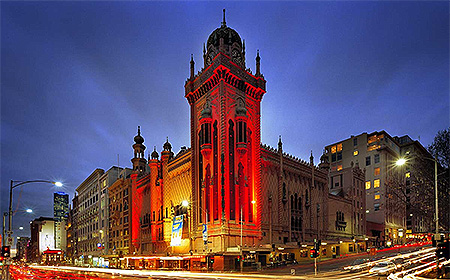
Disability Access to the Heritage Listed Museum of Australian Democracy at Old Parliament House
We are regularly told in our practice by clients, that building modifications to provide access for people with disability cannot be undertaken due to “Heritage Restrictions” on the subject property.
This, however, is an incorrect statement and I hope the following post makes things clearer, particularly in terms of the hierarchical levels of Australian legislation.
Firstly we need to understand the relationship between federal and state acts and codes.
At the very top, we have the Disability Discrimination Act 1992 and whilst this does not include any such prescriptive requirements on how compliance can be achieved, it, however, outlines where and how discrimination must not occur.
The following are the key sections of the DDA that are typically applicable in the built environment.
Section 5 : Direct Discrimination: less favourable treatment
Discrimination occurs if, because of a person’s disability, the person is, or is proposed to be, treated less favourably than a person without the disability.
Sections 7 & 8 : Discrimination: use of devices & aids
Discrimination occurs if a person who has a disability is treated less favourably because he or she is accompanied bya palliative or therapeutic device or auxiliary aid,
Section 23 : Discrimination in access to & use of premises
Unless unjustifiable hardship applies, a person must not be discriminated against because of the person’s disability, or the disability of any associate:
Discrimination is allowed if premises are existing, and alterations required to make them accessible would impose unjustifiable hardship on the person providing the accessibility.
Section 24 : Discrimination in access to & use of goods, services and facilities
Unless unjustifiable hardship applies, a person must not be discriminated against because of the person’s disability, or the disability of any associate
Discrimination is allowed if providing the goods or services, or making the facilities available, would impose unjustifiable hardship on the person providing or making them available.
There is a provision within the Act that covers “Unjustifiable Hardship” as follows
Section 11 : Unjustifiable hardship
In determining what constitutes unjustifiable hardship, the following will be considered:
You will note Heritage is not provided as an option to exempt access.
Therefore any organisation that failed to provide access to a building where it is possible, would be acting unlawfully and in breach of the Federal Act.
Whilst the DDA does not have any prescriptive requirements within it, it does reference two other pieces of Federal legislation that do detail specific requirements.
The Premises Standards introduces responsibilities for a number of stakeholders who must ensure compliance is achieved.
(similarly applies to most other states and territories)
Simultaneously on 1 May 2011, State legislation was introduced that replicated the Premises Standards to ensure consistency between Commonwealth and State legislation
Changes to State legislation included:
BuildingCode of Australia D3.4 Exemptions
The Building Code of Australia does provide an exemption to access, where access is inappropriate. Typical areas exempt from access include
However again, Heritage has not been provided as a justifiable reason.
The only way an organisation could argue not providing access would be;
Providing access to a heritage listed building for people with a disability whether it’s demolishing a step, increasing the opening of doors etc cannot be prevented as it would be unlawful under the Federal Act.

Disability Access to the Heritage Listed Forum Theater Melbourne
Note: Similar appeal processes are available in all other states and territories.
Whilst there is a mechanism in place to exempt access by means of a 160b application to the Building Appeals Board. We would be very confident heritage grounds would not be accepted unless it had a significant impact on the building. If this were to be the case the BAB would simply state the proposed use of the building would be inappropriate if access cannot be provided.
A 160b application is specific for Disability related matters and has a number of significant issues associated with it including;
Refer to VBA Practice Note 2014-14, Issued April 2014
Refer to section 7 of the 160b application form.
It is our professional belief that as the Disability Discrimination Act and Disability (Access to Premises – Buildings) Standards 2010 are both federal pieces of legislation, they take precedence over any local or state government heritage legislation.
So as detailed above we can see access takes precedence over heritage requirements, however this does not mean we go around destroying beautiful heritage buildings from our past. Equal Access has acted as access consultants on many heritage building projects around Australia including the Museum of Australian Democracy (Old Parliament House Canberra), the Forum Theatre (Melbourne).
It is our intent as access consultants when consulting on heritage projects is to work together in a collaborative manner with architects, heritage consultants to achieve a solution that is respectful to both the building being upgraded and for the individuals accessing it.
More information on our Heritage consulting Services